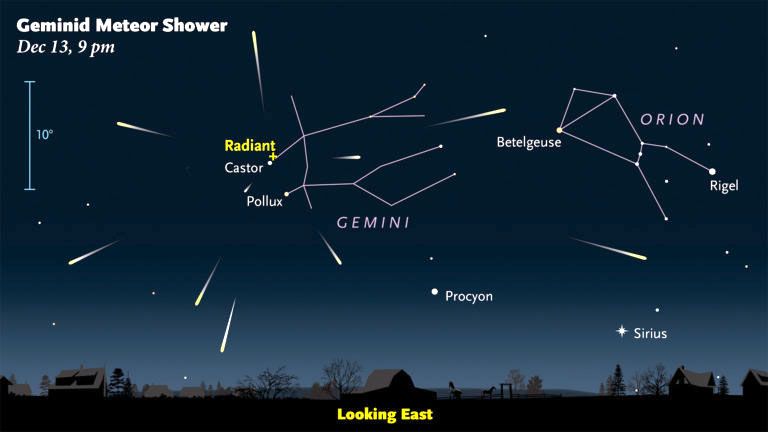The Geminid meteor shower is often one of the better shows of the year, but this go-around may not be as promising thanks to last week’s full moon.
The Geminids get their name because the radiant, where the meteors appear to originate, is in the constellation Gemini. You’ll find it in the eastern sky to the left of Orion and his famous three-starred belt. It’ll be at its highest around 2 a.m. local time. Remember that meteors can appear anywhere in the sky, though, not just near this radiant.
The Geminids peak the morning of Dec. 14, according to Sky & Telescope. That’s not great timing for the eastern U.S. since it’ll be when dawn is already lighting the sky.
Under ideal conditions, viewers can spot around 100 meteors per hour. However, since the peak is coming only a week after the full moon, it’ll still be pretty bright for those who have a clear sky, washing out the fainter shooting stars.
(Gregg Dinderman/Sky & Telescope)
You may have a chance to increase your luck, though. Try checking the sky between when the radiant rises in the evening and when the moon comes up around midnight. Get away from city lights and let your eyes adjust to the darkness for a half-hour; that includes not looking at your phone.
Check your local forecast here to see if you’ll have a clear sky.
The Geminid meteors are unusual because they’re debris from an asteroid, rather than a comet. This asteroid, called 3200 Phaethon, was discovered in the 1980s. It behaves like a comet, and scientists still aren’t entirely sure how it produces meteors.
Even though the year is almost out, we still have a couple of other celestial events ahead.
Our team of meteorologists dives deep into the science of weather and breaks down timely weather data and information. To view more weather and climate stories, check out our weather blogs section.

